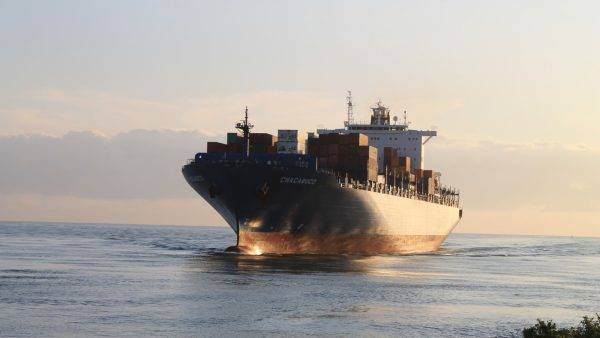The World Trade Organisation’s latest outlook brings cautious optimism, especially after global trade is now expected to rise by 0.9% in 2025, effectively avoiding an earlier feared drop of 0.2%. This shift comes from frontloaded imports and tempered tariff responses, yet risks remain. Slowing demand, rising protectionism, and geopolitical tensions threaten to disrupt this fragile balance.
Trade has long powered SMEs, opening markets beyond local borders to fuel growth. Yet, leaning heavily on a few international markets leaves them vulnerable when demand falls or barriers rise. This slowdown isn’t just cyclical. It signals a deep shift in global flows, with nations turning to regional alliances and inward-focused policies. The UNCTAD’s September 2025 Global Trade Update highlights how policy uncertainty is inflating costs and curbing growth for businesses worldwide.
Why This Hits SMEs Hard
Large corporations often have financial reserves to handle slumps in international orders or currency swings. SMEs, however, work on slim margins, with just-in-time inventories that falter when freight rates surge or logistics stall. A drop in trade volumes can quickly unravel production, erode cash flow, and disrupt plans. The WTO notes that North American exports could still decline by over 12% in 2025, potentially rippling across global supply networks. However, the pain spreads globally, and Europe grapples with weak exports, while Asia sees halved contributions to growth amid uncertainty.
Recent data underscores the strain on SMEs worldwide. Tariff uncertainty has surged, hitting 13.4 percentage points in April 2025, as measured in standard deviations, amplifying pressures on operations from North America to Europe. A Freightos survey reveals that 72% of small importers grapple with significant cost hikes from tariffs, with 44% facing increases above 20%, a pattern echoed in EU firms navigating retaliatory measures. This has prompted action: nearly half of small business owners surveyed across the US, UK, Canada, and Australia planned price rises in response, up from prior quarters, while EU SMEs report similar shifts amid a 13.8 percentage point tariff jump on key imports. The European Commission’s Spring 2025 Forecast flags a broader hit, with EU GDP growth downgraded to 1.1% due to heightened trade flux, dragging exports by just 0.7% this year and risking 8,000 to 10,000 job losses per €1 billion in curtailed output. An OECD analysis reinforces this, noting most SMEs anticipate persistent policy volatility through 2025, forecasting revenue dips and cost surges with scant buffers to absorb them.
Trade fragmentation deepens this. As countries strengthen regional blocs and local sourcing, the competitive landscape shifts. SMEs tied to old export markets risk being outpaced by agile rivals, and as the OECD notes, these disruptions hit SMEs hardest due to limited adaptation resources. Canada and the UK stand most exposed, per UNCTAD, with uncertainty exacerbating costs and slowing growth across borders.
So, how do you turn exposure into advantage?

Building Resilience During a Storm
1. Diversify Markets
Explore emerging regions where demand holds, even modestly. Southeast Asia, parts of Africa, and the Middle East are building trade corridors to offset slowdowns in mature markets. The African Continental Free Trade Area opens vast potential for intra-continental growth. Start small with local partners or e-commerce platforms to test markets without overextending.
Firms spreading across three or more markets cut revenue volatility by 15% during 2022 disruptions, boosting long-term returns. Purdue University research shows diversified firms face lower risks of closure, layoffs, or labour shortages. In 2025, 64% of diversified businesses report higher profits, proving the financial case.
2. Strengthen Local Supply Ties
A strong domestic or regional supplier base protects against shipping disruptions and price swings. Local sourcing cuts lead times and reduces disruption costs by 20% in volatile years. It also lowers emissions by up to 90% in supply segments, appealing to buyers valuing sustainability.
PwC’s 2024 report finds 82% of firms gain resilience, cost savings, and flexibility from partial localisation. This can consequently translate into stronger supply chains, better agility, and lower logistics costs. For SMEs, this mitigates risks and opens local partnership opportunities across continents
3. Invest in Intelligence
Track geopolitics, currency risks, and trade policies as closely as financials. Agility depends on foresight, and tracking geopolitics, currency risks, and trade policies as closely as financials has become a necessity. Use AI-driven scenario planning to map best- and worst-case outcomes for swift action. The OECD’s Supply Chain Resilience Review supports such tools for navigating risks.
4. Reassess Your Value
In a sluggish economy, competition sharpens. SMEs offering tailored, high-quality solutions, through customisation, modular designs, or circular practices, have a greater chance of building lasting customer loyalty. Flexible pricing and diversified revenue streams, as noted in HoneyBook’s 2025 trends, speed up decisions and tighten feedback loops.
Understanding the Long View
The next 18 months will test SMEs, yet trade is not disappearing, it is evolving into a more regional, digital and selective landscape. Grasping this shift is vital. It is no longer about merely surviving disruption but about redefining your position in a reshaped global economy. SMEs that commit to a long-term perspective will be best placed to thrive. Offering tailored, high-quality solutions, whether through personalisation, modular design or circular practices, fosters enduring customer loyalty. At the same time, flexible pricing and diversified revenue streams create agility, with two-thirds of SMEs using such models reporting faster decision-making and greater responsiveness to market change.
The World Bank’s 2025 SME Resilience Report notes that firms investing in digital tools such as blockchain for real-time supply chain updates or AI for predictive analytics achieved a 22% reduction in operational losses during recent disruptions. Digitalisation also lowers trade barriers and creates opportunities for firms of all sizes. Digital trade reduces engagement costs and strengthens resilience. Why consider this now? Because focusing only on short-term survival risks becoming short-sighted. SMEs that align with these trends in regional networks, digital agility and value-driven innovation will be best placed to capture emerging markets and outpace competitors tied to outdated models. This is a call to evolve, not retreat. Face the headwinds as catalysts for reinvention. The horizon promises growth for those who sail with purpose.




